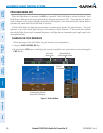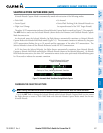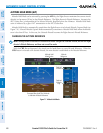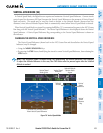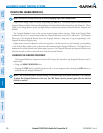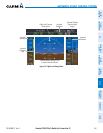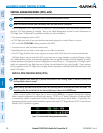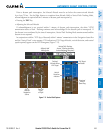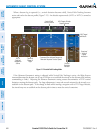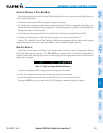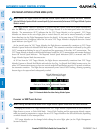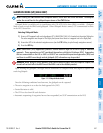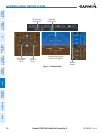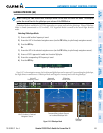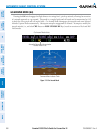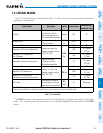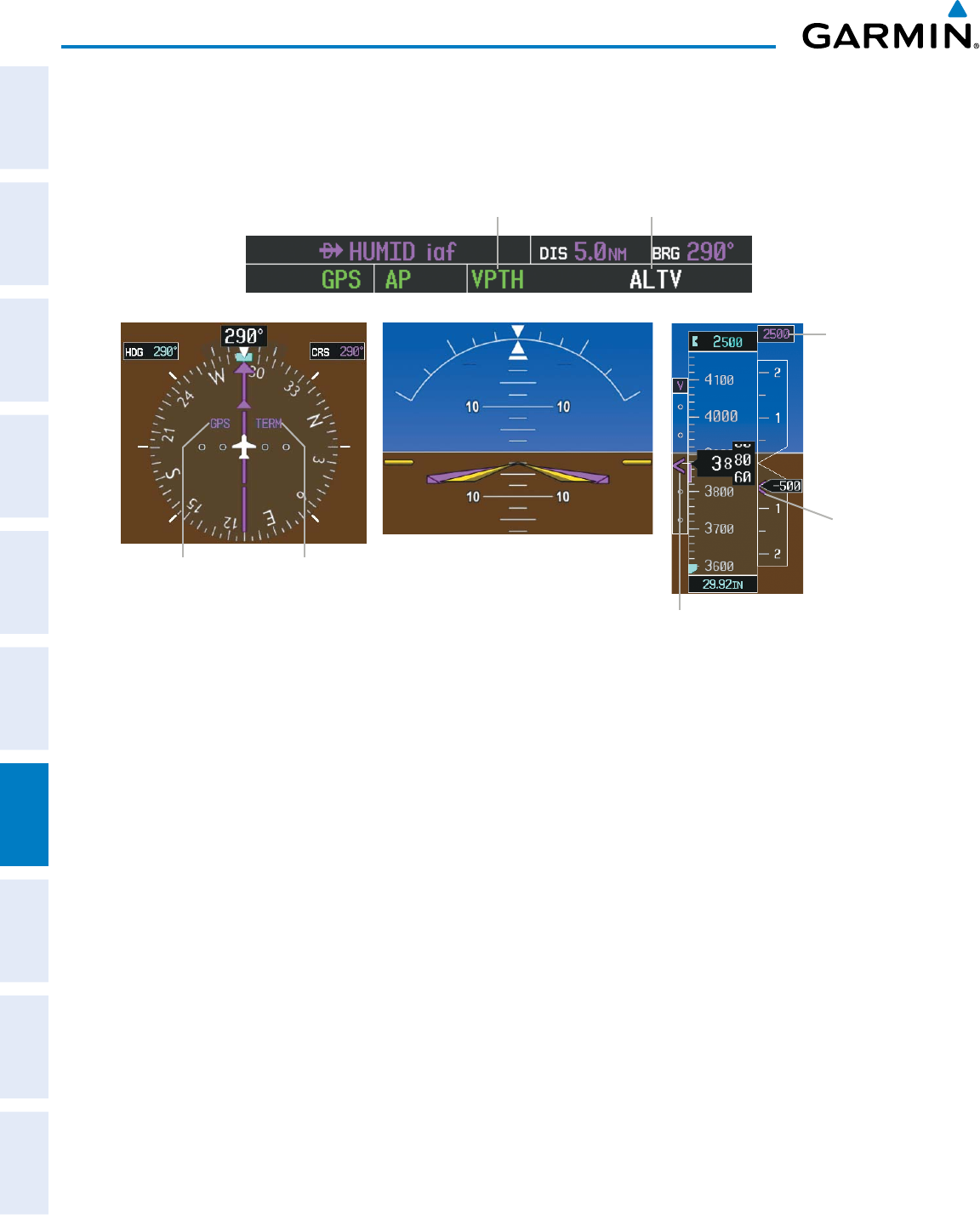
Garmin G1000 Pilot’s Guide for Cessna Nav III
190-00498-07 Rev. A
444
AUTOMATIC FLIGHT CONTROL SYSTEM
SYSTEM
OVERVIEW
FLIGHT
INSTRUMENTS
EIS
AUDIO PANEL
& CNS
FLIGHT
MANAGEMENT
HAZARD
AVOIDANCE
AFCS
ADDITIONAL
FEATURES
APPENDICESINDEX
Whenadescentlegis captured (i.e.,vertical deviationbecomes valid),Vertical PathTrackingbecomes
activeandtracksthedescentprole(Figure7-12).Analtitudecapturemode(‘ALTS’or‘ALTV’)isarmedas
appropriate.
Figure 7-12 Vertical Path Tracking Mode
Command Bars Indicate Descent to
Maintain Required Vertical Speed
VNV Target
Altitude
Vertical
Deviation
Indicator
Required
Vertical
Speed
Indication
Terminal
Phase of
Flight
GPS is
Selected
Navigation
Source
VNV Target Altitude
Capture Armed
Vertical Path
Tracking Active
IftheAltimeter’sbarometricsettingisadjustedwhileVerticalPathTrackingisactive,theightdirector
increases/decreasesthedescentratebyupto500fpmtore-establishtheaircraftonthedescentpath(without
commandingaclimb). Adjustingthealtimeterbarometricsettingcreatesdiscontinuitiesin VNVvertical
deviation,movingthedescentpath.Forlargeadjustments,itmaytakeseveralminutesfortheaircrafttore-
establish on the descent path. If the change is made while nearing a waypoint with a VNV Target Altitude,
theaircraftmaynotre-establishonthedescentpathintimetomeettheverticalconstraint.



